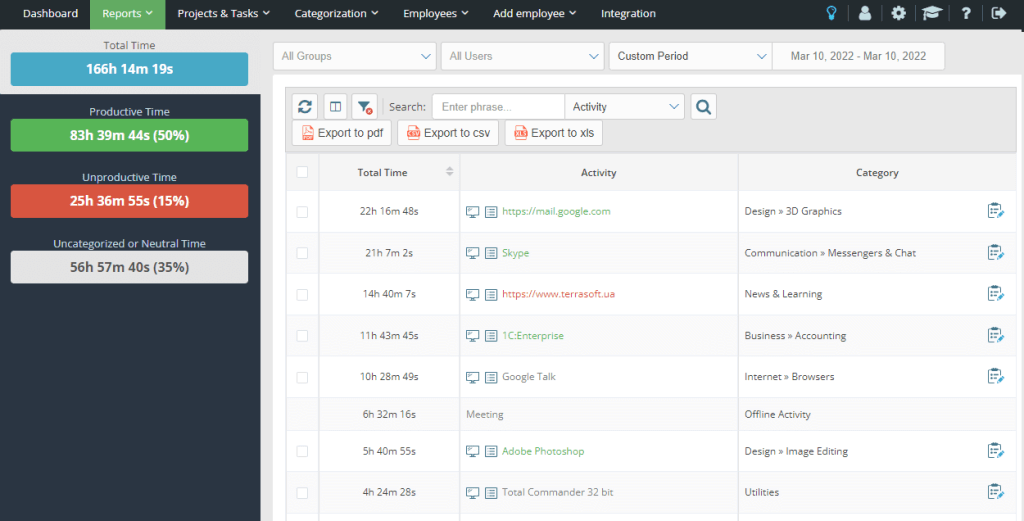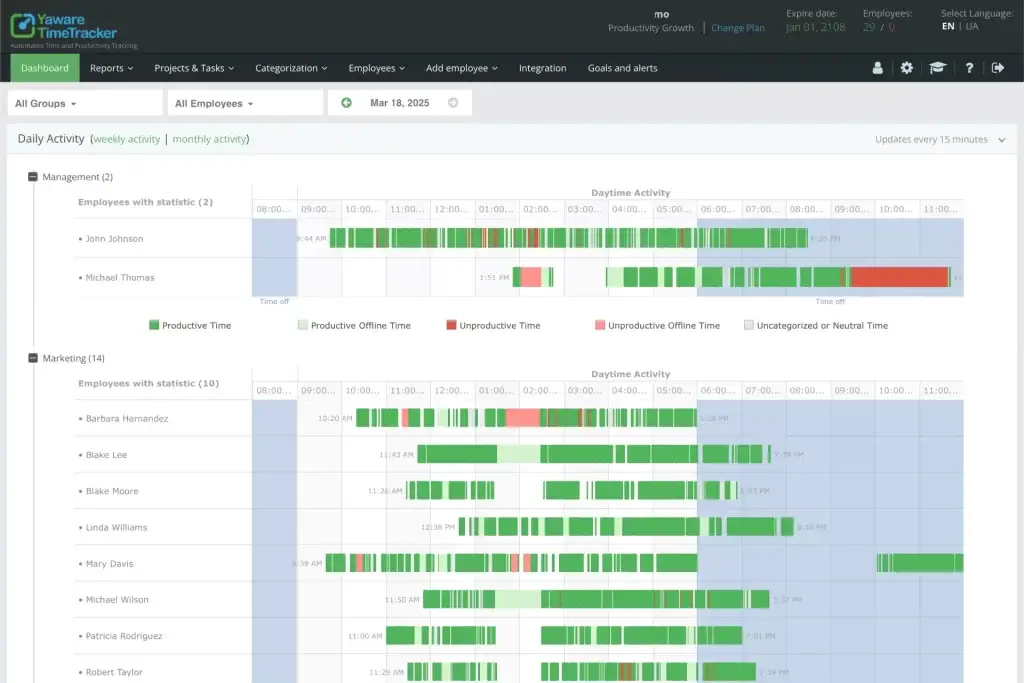Remote work transformed how teams operate, but many managers still struggle to understand what their distributed workforce actually accomplishes during work hours. Without the casual visibility of an office environment, leaders often feel disconnected from their team's daily reality. This creates a fundamental challenge: how do you maintain productivity oversight without creating a surveillance culture that damages trust and morale?
Why monitoring productivity is critical for remote teams
The shift from office-based to remote management requires entirely different approaches to team oversight. Traditional management relied on physical presence as a proxy for productivity, but distributed teams need data-driven visibility instead. Research from Harvard Business Review shows that managers who lack clear productivity insights often make incorrect assumptions about team performance, leading to unfair evaluations and missed optimization opportunities.
Without proper visibility, remote teams experience higher rates of burnout, inefficient task allocation, and increased turnover. Team members may struggle with unclear expectations while managers worry about output quality. An online time tracker provides the objective data needed to address these concerns systematically rather than through guesswork.
Which tools help you see actual team workload
Effective remote team productivity monitoring relies on comprehensive dashboards that visualize work patterns, not just hours logged. Time tracking software creates heatmaps showing when team members are most productive, while activity tracking reveals which applications and projects consume the most attention. KPI visualizations help identify bottlenecks before they impact deadlines.

The most valuable tools combine quantitative metrics with qualitative context. A robust work time control system shows not just how long someone worked, but what they accomplished during that time. Modern platforms integrate with project management tools to connect time data with actual deliverables, creating a complete picture of team productivity.
How to implement monitoring without pressure or control culture
The biggest barrier to successful productivity monitoring isn't technical—it's psychological. Gallup research indicates that employees who feel surveilled rather than supported show decreased engagement and higher stress levels. The key difference lies in positioning: transparency versus surveillance.
Successful implementation starts with clear communication about purposes and benefits. When introducing employee activity tracking, emphasize team optimization rather than individual policing. For example, a consulting firm implemented their time tracker by first showing managers how the data helped with client billing accuracy and project planning. Only after establishing this value did they extend visibility to individual productivity patterns.
Frame the system as a tool for the team's benefit, not management's control. Share aggregated insights that help everyone understand workflow patterns and collaboration opportunities.
Best practices for monitoring remote productivity
Building trust while maintaining oversight requires following principles that prioritize team empowerment over micromanagement. These approaches reduce resistance while improving actual outcomes, creating a foundation for sustainable productivity monitoring.
Five core principles for ethical remote monitoring:
- Transparent data access – Team members should see the same productivity data that managers review
- Context-driven interpretation – Always consider external factors before drawing conclusions from metrics
- Goal-oriented tracking – Focus measurements on outcomes and deliverables rather than activity alone
- Regular feedback loops – Use data as conversation starters, not performance verdicts
- Privacy boundaries – Monitor work applications only, never personal activities or communications
These principles work because they transform monitoring from a management tool into a team resource. When people understand how productivity monitoring systems help them work more effectively, resistance decreases and engagement improves.
How to read productivity data — and what to do with it
Raw productivity numbers require careful interpretation to generate useful insights. Low activity scores don't automatically indicate laziness or disengagement—they might reflect deep thinking work, external meetings, or personal challenges that temporarily affect performance.

Consider a marketing team of five people showing decreased afternoon productivity. Rather than assuming laziness, investigate contextual factors: Are they attending client calls? Working on strategy documents that require sustained focus? Dealing with childcare responsibilities? The time tracking for distributed teams reveals patterns, but human judgment determines appropriate responses.
Use productivity data to identify trends over weeks and months rather than daily fluctuations. Look for correlation between high-productivity periods and specific work conditions, then help team members replicate those successful patterns.
Common mistakes HR and managers make in evaluating remote teams
Many organizations sabotage their productivity monitoring efforts through implementation errors that damage trust and reduce data quality. Understanding these pitfalls helps leaders avoid creating systems that harm more than they help.
Typical errors in implementing productivity control systems:
- Focusing on surveillance over support – Using data to catch problems rather than prevent them
- Ignoring individual work styles – Expecting uniform productivity patterns across different roles and personalities
- Overvaluing activity metrics – Prioritizing mouse clicks and keystrokes over actual deliverables
- Missing collaborative work – Failing to account for meetings, planning sessions, and team coordination time
- Rushing implementation – Installing monitoring tools without proper communication or training
These mistakes occur when organizations treat remote work productivity tools as automated management solutions rather than data sources that require human interpretation and sensitivity.
Can you measure initiative, not just activity?
Traditional activity tracking captures keystrokes and application usage, but measuring proactive behavior requires different metrics. Look for patterns that indicate autonomy: early project starts, voluntary skill development, cross-team collaboration, and innovative problem-solving approaches.
Dynamic tracking reveals these qualities through trend analysis rather than snapshot metrics. Someone who consistently begins projects before deadlines demonstrates initiative, even if their daily activity levels vary. Remote team visibility should capture these longer-term patterns that indicate employee engagement and growth mindset.
Track metrics like voluntary training completion, peer collaboration frequency, and process improvement suggestions. These indicators provide insight into team members who drive progress beyond their immediate responsibilities.
What changes after launching a transparent time tracking system
Organizations that implement ethical productivity monitoring typically see improved workload distribution, enhanced team focus, and clearer communication about priorities. Team members gain better understanding of their own work patterns and can optimize their schedules accordingly.
One technology consulting firm found that transparent time tracking helped them identify that their senior developers were spending 40% of their time on administrative tasks rather than coding. This insight led to hiring administrative support, which improved both productivity and job satisfaction. The data provided objective evidence for resource allocation decisions that might otherwise have been delayed or overlooked.
Teams also report improved project planning accuracy when they can reference historical time data for similar work. This creates more realistic deadlines and reduces the stress that comes from consistently underestimating task complexity.
Want to see what your remote team's focus actually looks like? Register at Yaware.com and get access to real-time insights—calmly, ethically, and without micromanagement.

